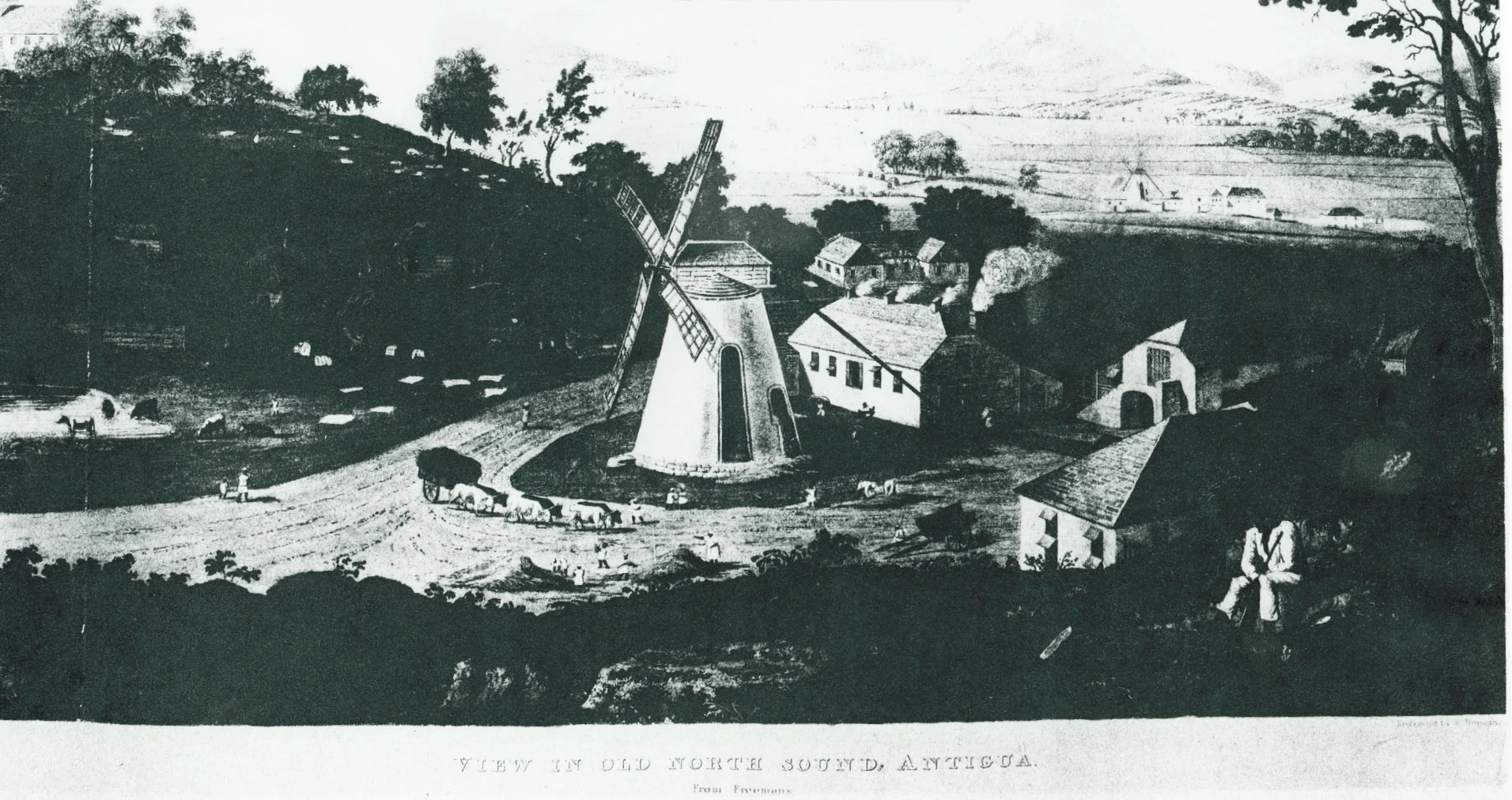The above scene is believed to represent Major Samuel Martin's (d.1701) sugar plantation, Green Castle on the British island of Antigua in the West Indies. The prominent stone windmill is the source of power for the sugar refinery which signified the large size and importance of the Martin plantation.
One of the finest pre- Revolutionary War homes on Long Island, Rock Hall was built in 1767 for Josiah Martin, a wealthy West Indian plantation owner. The Georgian- style home belonged to two of the area's most famous families, the Martins and Hewletts. In 1948, the Hewlett family deeded Rock Hall to the Town of Hempstead. After an extensive restoration, it opened as a museum in 1953 and is owned and operated by the Town of Hempstead.
The museum offers a guided tour, programs of historic interest, special lectures and an educational program for students. Visit the museum's cellar. The Warming Kitchen, Cold Storage Room and Wine Cellar offer fascinating views of the rarely seen working areas in an 18th century plantation- style home. Also located in the cellar is the museum's ongoing Archaeology Exhibit Room. There you will see a display of 18th and 19th century artifacts that continue to be uncovered during excavations at Rock Hall.


